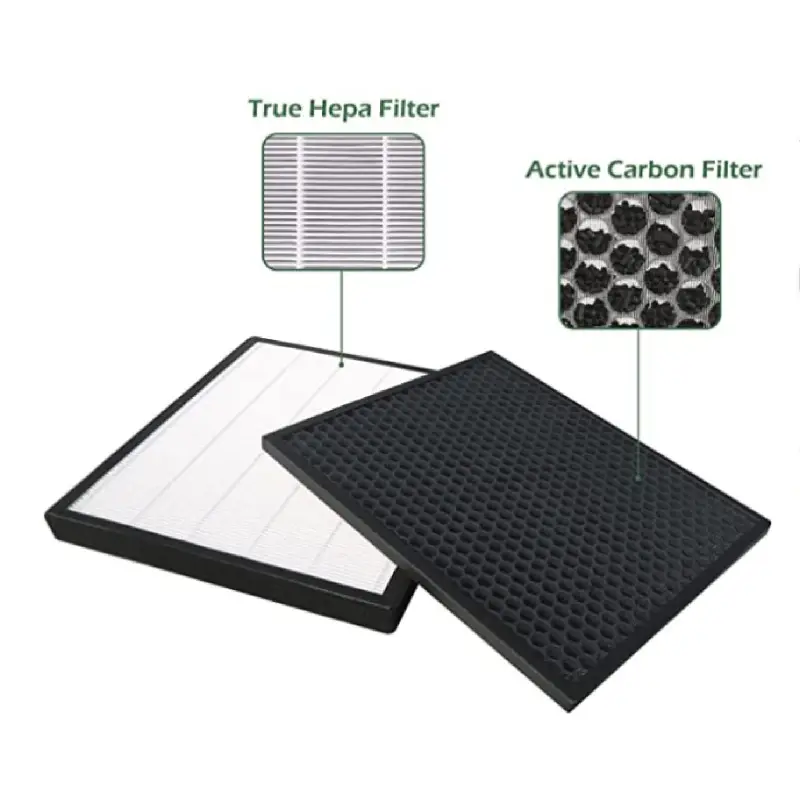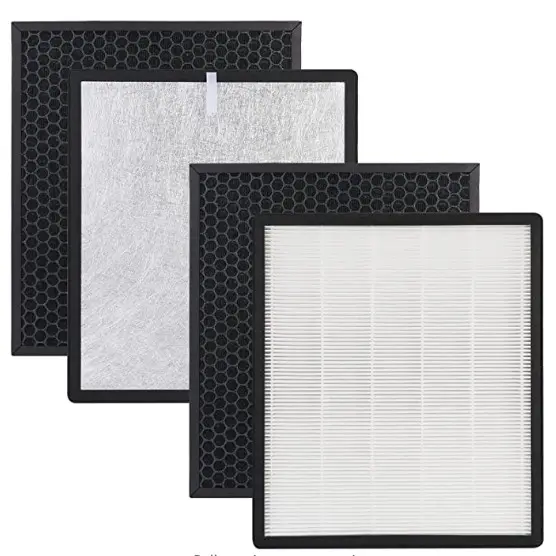Understanding the Power of Advanced Air Filtration Technology
The quest for cleaner, healthier indoor air has led to remarkable innovations in filtration technology. Among these advancements, activated carbon air filters have emerged as a revolutionary solution for maintaining optimal air quality in homes and offices. These sophisticated filtration systems leverage the incredible properties of activated carbon to remove harmful pollutants, creating a safer breathing environment for you and your loved ones.
Activated carbon air filters work through a process called adsorption, where molecular-sized pollutants are trapped within the carbon's porous structure. This unique capability sets them apart from traditional filters, making them exceptionally effective at eliminating both visible and invisible airborne contaminants. As air passes through the activated carbon air filter, a wide range of pollutants, from common household odors to harmful volatile organic compounds (VOCs), are effectively captured and removed.

The Science Behind Activated Carbon Filtration
Chemical Structure and Adsorption Process
Activated carbon's effectiveness lies in its incredibly porous structure, created through a specialized activation process. During manufacturing, carbon-rich materials are heated at high temperatures in an oxygen-free environment, creating millions of microscopic pores. These pores dramatically increase the surface area of the activated carbon air filter, providing maximum contact between the filter medium and airborne pollutants.
The adsorption process occurs when contaminated air passes through the activated carbon air filter. Pollutant molecules are attracted to the carbon's surface through van der Waals forces, effectively binding them to the filter material. This process is particularly effective for removing organic compounds, chemicals, and gases that other filtration methods might miss.
Types of Pollutants Targeted
An activated carbon air filter excels at capturing a diverse range of airborne contaminants. These include volatile organic compounds (VOCs) from cleaning products, paint fumes, and new furniture, as well as everyday odors from cooking, pets, and smoke. The filter also effectively removes benzene, formaldehyde, and other harmful chemicals commonly found in indoor environments.
The filtration capability extends to gaseous pollutants that traditional mechanical filters cannot capture. This makes activated carbon air filters particularly valuable in urban environments where industrial emissions and vehicle exhaust can penetrate indoor spaces.
Health Benefits and Indoor Air Quality Improvement
Respiratory Health Enhancement
Using an activated carbon air filter daily can significantly improve respiratory health. By removing airborne irritants and allergens, these filters help reduce the risk of respiratory infections, asthma attacks, and other breathing-related issues. People with sensitive respiratory systems often report immediate relief when using activated carbon filtration in their living spaces.
The removal of microscopic particles and chemical pollutants also helps prevent long-term respiratory problems that can develop from prolonged exposure to poor air quality. This is particularly important for children, elderly individuals, and those with existing health conditions.
Allergy and Asthma Relief
Allergy sufferers find substantial relief when using activated carbon air filters in their homes. These filters effectively remove common allergens like pollen, pet dander, and dust, while also capturing the chemical irritants that can trigger allergic reactions. The combination of particle and gas filtration makes activated carbon air filters an essential tool for managing allergies and asthma symptoms.
Regular use of these filters can lead to fewer allergy flare-ups and reduced dependence on medication. Many users report improved sleep quality and better overall well-being after installing activated carbon air filtration systems in their bedrooms.
Environmental and Lifestyle Advantages
Energy Efficiency and Cost Benefits
While the initial investment in an activated carbon air filter might be higher than basic filters, the long-term benefits often result in cost savings. These filters help maintain HVAC system efficiency by preventing the buildup of pollutants in the system. This leads to reduced energy consumption and lower utility bills over time.
Additionally, the comprehensive filtration provided by activated carbon can extend the life of your HVAC equipment, reducing maintenance and replacement costs. The improved air quality also means less frequent cleaning and dusting of your living space.
Sustainable Living Impact
Using an activated carbon air filter aligns with sustainable living practices. These filters reduce the need for chemical air fresheners and other artificial odor-control products that can harm the environment. The filtration process is chemical-free and environmentally friendly, making it a responsible choice for eco-conscious consumers.
Many modern activated carbon air filters are designed with recyclable components and environmentally sustainable manufacturing processes, further reducing their environmental impact. This makes them an excellent choice for those looking to maintain clean air while minimizing their ecological footprint.
Maintenance and Optimization Tips
Filter Replacement Schedule
To maintain optimal performance, activated carbon air filters require regular replacement. The frequency depends on factors such as air quality, usage patterns, and environmental conditions. Generally, these filters should be replaced every 3-6 months, though heavy use or poor air quality might necessitate more frequent changes.
Monitor filter performance by paying attention to changes in air quality and any return of odors or irritants. Some advanced filters come with indicators that signal when replacement is needed, helping maintain consistent air purification effectiveness.
Performance Optimization Strategies
Maximize the benefits of your activated carbon air filter by placing it in optimal locations within your space. Areas with high pollution levels or frequent odors, such as kitchens or near pet areas, benefit most from filtration. Ensure proper airflow around the filter and avoid blocking vents or intake areas.
Regular cleaning of surrounding areas and maintaining proper humidity levels can enhance filter performance. Consider using multiple filters in large spaces or areas with specific air quality challenges to ensure comprehensive coverage.
Frequently Asked Questions
How long does an activated carbon air filter last before needing replacement?
An activated carbon air filter typically needs replacement every 3-6 months, depending on usage and environmental conditions. Heavy pollution, smoking, or frequent cooking may require more frequent changes. Monitor filter performance and follow manufacturer recommendations for optimal results.
Can activated carbon air filters remove viruses and bacteria?
While activated carbon air filters excel at removing chemicals, gases, and odors, they are not primarily designed to capture viruses and bacteria. For complete protection against microorganisms, consider combining an activated carbon filter with HEPA filtration technology.
Are activated carbon air filters worth the investment?
Yes, activated carbon air filters provide significant value through improved indoor air quality, health benefits, and reduced energy costs. While the initial cost may be higher than basic filters, the comprehensive pollutant removal and potential long-term savings make them a worthwhile investment for most households.

